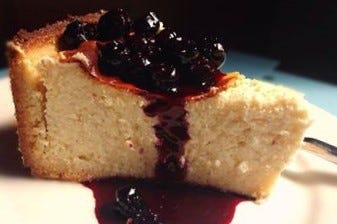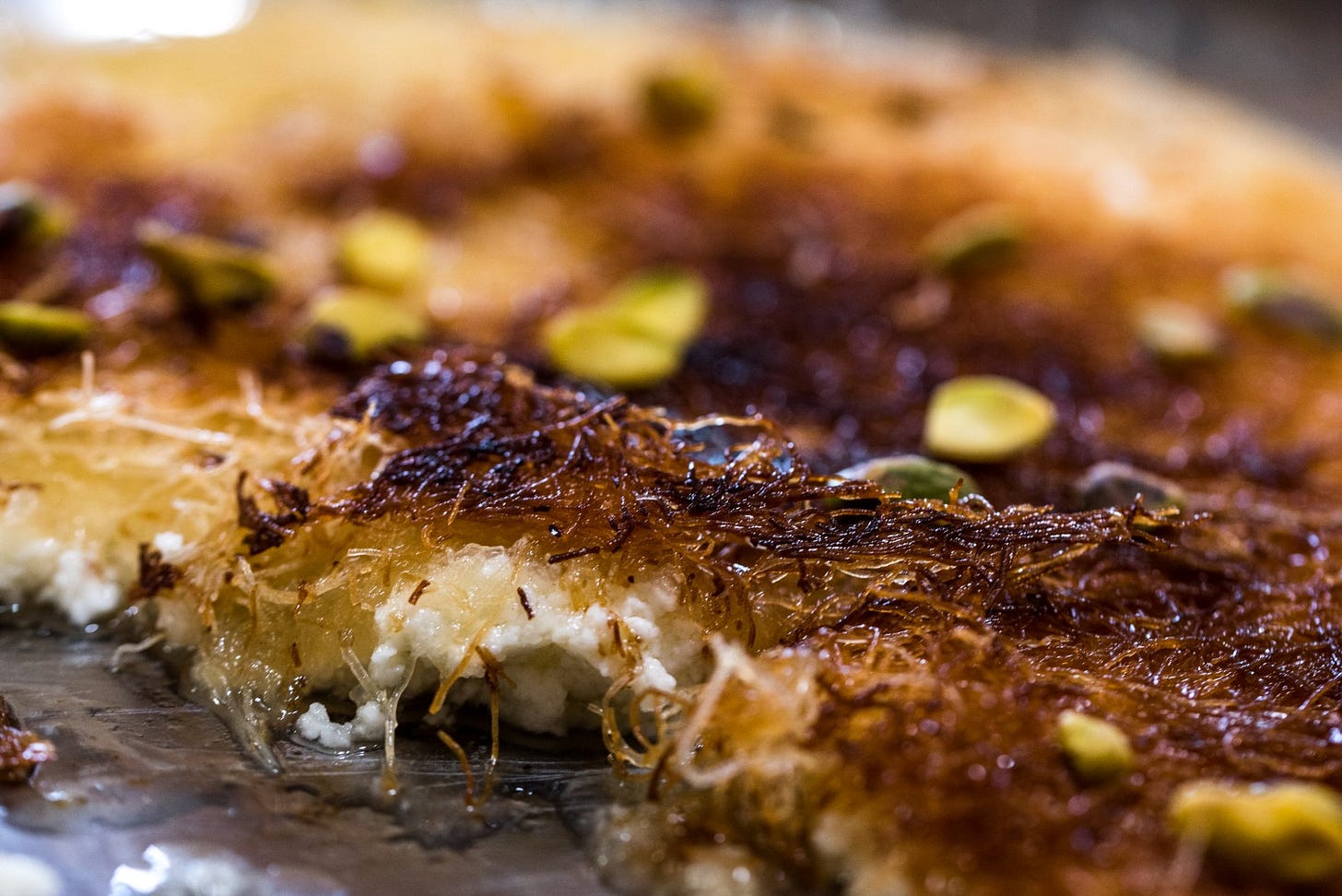Shavout, known as the ‘Festival of Weeks’ was celebrated at the end of last week. It is one of the three significant pilgrimage festivals celebrated within the Jewish calendar, marking the giving of the Ten Commandments to Moses on Mount Sinai and the annual wheat harvest within the land of Israel. It is celebrated by eating dairy foods, requiring no special preparation of meat under the religious food laws of kashrut, and has been heralded a fest for the cheesecake, a dessert that for centuries has held national pride within the diverse culinary culture of the land of Israel.
The cheesecake, originated in Ancient Greece around 2000 BCE was made in its simplistic form as an energy booster for Olympian athletes. It was called Savillum, with the oldest recipe found written Latin in De Agri Cultura (On Agriculture) written by the Roman historian and politician, Cato the Elder. This was a rustic dish consisting of a soft cheese pounded together with wheat flour and honey to form patties before being cooked in an earthenware pot on a open fire.
Cato’s Savillum: Take ½ pound of flour, 2½ pounds of cheese, and mix together; add ¼ pound of honey. Grease an earthenware dish with oil. When you have mixed thoroughly, pour into a dish and cover with a crock. See that you bake the centre thoroughly, for it is deepest there. When it is done, remove the dish, cover with honey, sprinkle with poppy-seed, place back under the crock for a while, then remove from the fire. Serve in the dish, with a spoon.
The Romans seized the cheesecake together with Ancient Greece back in 146 BCE, adapting the original recipe by adding eggs to the cheese and lashings of honey for a sweeter, richer mixture. They used the earthy whole grain barley flour as a crust to hold the creamy filling often adding flavourings of bay or myrtle for a touch of savouriness.
Despite its humble beginnings within the Middle East, the cheese filled pastry gained its popularity during the Middle Ages in Europe where it is said to have become a popular Jewish Ashkenazi delicacy, not only at the festival of Shavout, but at many celebrational feasts. By 14th century, the cheesecake found its way to England where is began in earnest to make a name for itself and started to resemble the more modern baked tart, often laced with the fragrant flavourings of rose and elderflower and made all the more indulgent with the addition of butter and sugar. Recipes for baked sweet cheese tarts called Sambocade were included in the first publication of the medieval cookbook The Forme of Cury c.1390, as commissioned by Henry V111, including his favourite dessert, the elderflower cheesecake.
179. Sambocade: Take and make a crust in a trap & take cruddes and wryng out þe wheyze and drawe hem þurgh a straynour and put hit in þe crust. Do þerto sugar the þridde part, & somdel whyte of ayren, & shake þerin blomes of elren; & bake it vp with eurose, & messe it forth.
The English love of the cheesecake swept across to America by 1700’s where it took on a life of itself as a ‘curd pudding’ flavoured with spices, dried fruits and citrus. Over the centuries the American style cheesecake became lighter in texture as curd cheese made way to cream cheese and latterly with the Philadelphia brand, as the ‘New York Cheesecake’ was introduced to bakeries and restaurants in Manhattan by German Jewish immigrant, Arnold Reuben, of the Reuben sandwich fame. It was often served with a fruit sauce for balance of flavour.
Throughout the Middle East, the cheesecake has always sat proudly on tables at festivals and feasts and on restaurant menus, claiming its proud position as the region’s national dessert. The quintessentially British culinary culture of ‘desserts and puddings’ is unfamiliar to the Middle Eastern cuisine, relishing in a sweet treat with a heady cup of coffee or at a celebratory meal, often in the form of mammoul, baklava or knafeh… the cheese filled pastry, or ‘cheesecake of the East’.
Knafeh is a traditional Ottoman dessert, thought to have been discovered by the Mamluks, the Muslim slave soldiers who ruled Palestine in 13th Century. From the ancient Circassian language spoken during the Ottoman rule, Knafeh is thought to mean ‘a coloured bird’, with particular reference to the olive winged bulbul, a songbird native to this region, whose vents are bright orange and represent the kaleidoscope of colour in the layers of this dessert, which is often due to the addition of orange food colouring to the pastry commonly associated with knafeh, and seen in bakeries and market stalls.
Knafeh is a rich tasting, layered pastry whose textures and flavours marry together in perfect harmony and considered to be the most cherished and most consumed Arabic dessert in the Levant. It is eaten throughout the month of Ramadan to celebrate the end of the fast and to replenish the bodies sugar levels in preparation for the next day of fasting. It is also eaten as a symbol of goodwill and hope, despite the conflicting ways in which it is made. Likened to the cheesecake ‘angel hair’ kataif pastry is lavishly coated with soft clarified butter, before crumbly sheep or goats’ cheese is strewn across, before another layer of pastry covers the filling and crunchy pistachios are crumbled across the top. It is baked to a golden hue and then smothered with a sticky syrup flavoured with rose or orange blossom. Knafeh can be made in two ways and there is a name for each one. Khishneh is crisper and rougher in texture as the creamy filling is topped with baked with an added layer of shredded kataif pastry, and na'ameh has a smoother finish with a layer of ground semolina called farkeh as it’s covering. Knafeh has not fulfilled its true potential, if the sticky floral syrup and rich creamy filling is not left running down your chin after one bite of this sweet delight…
Culturally, there are regional variations to making both cheesecake and knafeh, depending on the heritage of the baker and how they were taught to characterise the traditions of these national desserts. Whether baked or chilled, crisp or smooth, curd, creamy or stringy, or topped with fruit, nuts or syrup, a cheese filled pastry made with wheat or barley is as popular today as it was so many centuries ago. Recipes have been passed down through the generations to cooks and chefs, and served religiously at festivals, celebrations, street corners and markets. It is served at high end restaurant menus and local hummus joints, and with innovative flavours and experimental creations, vegan bakeries are popping up in central Tel Aviv, serving knafeh using plant based cheese and nut oils instead of the traditional Nabulsi sheep cheese and ghee.
Whatever the occasion, or not… Enjoy!








